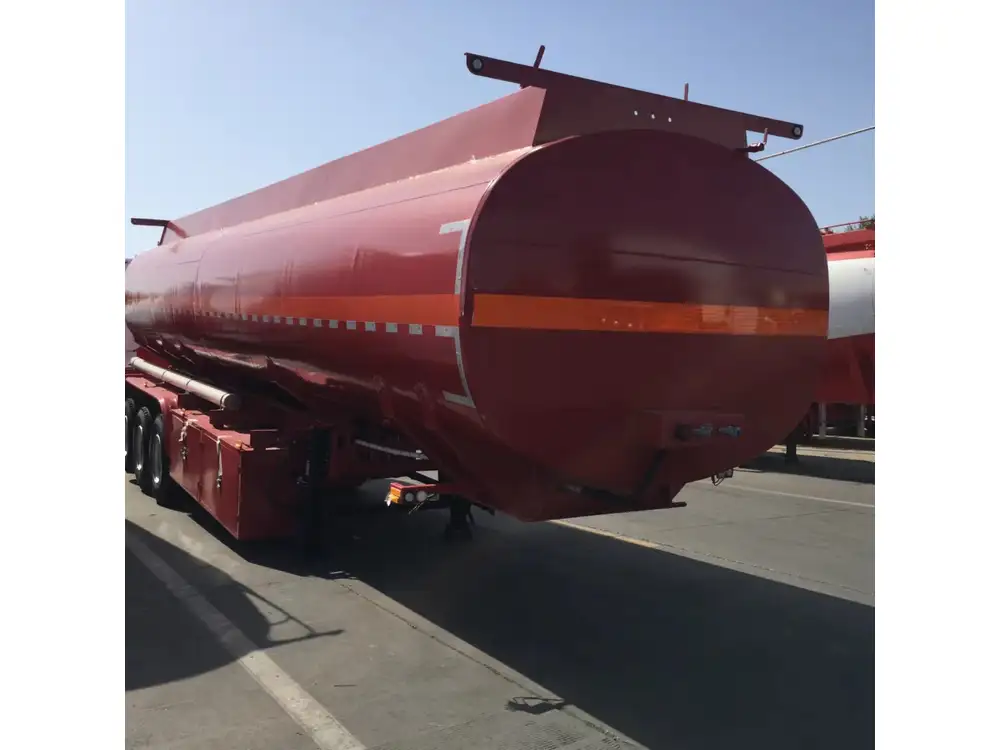When navigating the realm of logistics, fleet owners, drivers, and cargo specialists often find themselves caught in a web of specifications and dimensions, particularly when considering the internal dimensions of semi-trailers. One of the most vital metrics in this domain is the height within these massive freight vehicles. This guide endeavors to unravel the intricacies surrounding this crucial measurement and its implications for efficient cargo transport.
Key Measurements: Standard Interior Heights
Standard Semi-Trailer Heights
The interior height of a semi-trailer varies depending on the type of trailer and its intended function. Below is a comparative table outlining the common categories and their standard interior heights:
| Semi-Trailer Type | Standard Interior Height | Common Uses |
|---|---|---|
| Dry Van Trailers | 96 inches (8 feet) | General freight, household goods |
| Reefer Trailers | 98 to 100 inches (8.2 to 8.3 feet) | Temperature-sensitive goods |
| Flatbed Trailers | 54 to 60 inches (4.5 to 5 feet) | Heavy machinery, large equipment |
| Curtain Side Trailers | 96 to 98 inches (8 to 8.2 feet) | Versatile loading/unloading |
| Lowboy Trailers | 18 to 30 inches (1.5 to 2.5 feet) | Oversized loads, heavy equipment |

Factors Influencing Interior Height
The construction and design of semi-trailers are subject to a variety of factors which can impact their interior height:
- Purpose of Use: Trailers designed for specific cargo types (e.g., refrigerated items vs. heavy machinery) will have different height requirements.
- Trailer Manufacturing Standards: Regulations and standards set by manufacturing bodies might also dictate dimensions to ensure compatibility with loading docks and transport regulations.
- Customization Options: Trailer manufacturers often provide customizable solutions that accommodate particular business needs, thus affecting the final interior height.
Why Interior Height Matters
Impact on Cargo Capacity
The relationship between interior height and cargo capacity is paramount. A semi-trailer with a greater interior height allows for stacking and accommodating larger items, potentially enhancing load efficiency. However, it is critical to balance height with stability, especially when dealing with taller or more unstable loads.

Compliance with Loading Standards
Another crucial aspect is compliance with loading regulations. Semi-trailers must adhere to Federal Highway Administration (FHWA) limits, which dictate overall vehicle height. The standard legal height limit for loaded trailers on most public roads in the U.S. is 13.5 feet. Understanding how the interior height relates to these directives helps fleet owners make informed decisions to avoid penalties and ensure safe transport.
Loading and Unloading Efficiency
A trailer’s interior height can significantly influence loading and unloading processes. Higher trailers facilitate easier maneuverability for fork trucks and other loading equipment, ultimately reducing loading times. This efficiency translates to operational savings and improved delivery timelines, making interior height a crucial consideration during selection.
Considerations for Unique Cargo Types

Tall or Oversized Loads
When transporting tall or oversized cargo, understanding the interior height becomes imperative. Loads exceeding standard heights must be evaluated for:
- Permit Requirements: Special permits might be necessary, depending on the extent of the dimension exceeding standard limits.
- Routes: Certain roads and bridges may have height restrictions, requiring planned routes to mitigate risks of accidents or damage.
Temperature-Controlled Goods
For temperature-sensitive cargo, like pharmaceuticals or perishable goods, reefer trailers come into play, often offering slightly more height for better air circulation while maintaining temperature integrity. An optimal interior height can ensure even airflow, reducing spoilage during transport.
Calculating Usable Space: Interior Height vs. Usable Height
It is essential to differentiate between the nominal interior height and the usable height within a semi-trailer.

What Is Usable Height?
Usable height considers the space above the floor and beneath obstructions, which may include:
- Ceiling Contours: Some trailers have sloped or contoured ceilings that reduce effective height.
- Internal Structures: Wheel wells, vents, or built-in shelving can also detract from usable height.
To maximize cargo efficiency, calculating the usable height helps determine the optimal arrangement of loads within the constraints of the trailer.
Example Calculation
For instance, a standard dry van trailer might have an interior height of 96 inches. If the ceiling slopes down at a certain angle or if internal fixtures protrude by 6 inches, the usable height would measure 90 inches. This allows for precise planning when arranging cargo with varying height dimensions.
How to Measure Interior and Usable Heights
Accurately measuring the interior height of a semi-trailer ensures that cargo planning is both efficient and compliant. Here are steps to make precise measurements:

Required Tools
- Measuring Tape: Use a durable, flexible measuring tape that can extend high enough to reach the ceiling.
- Level: A spirit level to ensure straight measurements.
Measurement Steps
Ensure the Trailer is Empty: Confirm that the trailer is devoid of cargo, enabling accurate height measurement.
Select Measurement Points: Measure from the floor to the highest point of the ceiling at multiple sections to account for any variance.
Check Usable Space: Determine usable space by measuring sections around fixtures and sloped ceilings.
Record Measurements: Document the measurements in a structured format for future reference in shipping operations.
Listed Examples of Semi-Trailer Configurations
To provide context to the importance of interior height, let’s explore a few notable semi-trailer configurations:
Standard Dry Van Trailer 53 ft:
- Interior Height: 108 inches
- Usable Height: 102 inches (after accounting for cargo and internal structures)
Reefer Trailer 40 ft:
- Interior Height: 100 inches
- Usable Height: 95 inches (allowing for refrigeration units)
Flatbed Trailer:
- Interior Height: Often not applicable due to the open nature but consider load height restrictions.

Conclusion: Navigating Semi-Trailer Heights for Optimal Efficiency
Understanding the intricate elements surrounding the interior height of semi-trailers is essential for manufacturers, logistics coordinators, and fleet managers alike. By delving into standard heights, usable space calculations, and specific cargo considerations, stakeholders can make informed decisions that optimize transportation efficiency, ensure compliance, and enhance loading operations.
In the fast-paced world of logistics, knowledge becomes a powerful tool; let it guide you in selecting the right semi-trailer for your business needs and achieving seamless cargo transport across the vast network of highways. For more information about specific semi-trailer configurations or to begin your next purchase, consider reaching out to a specialized trailer manufacturer.



